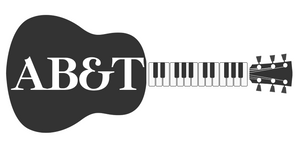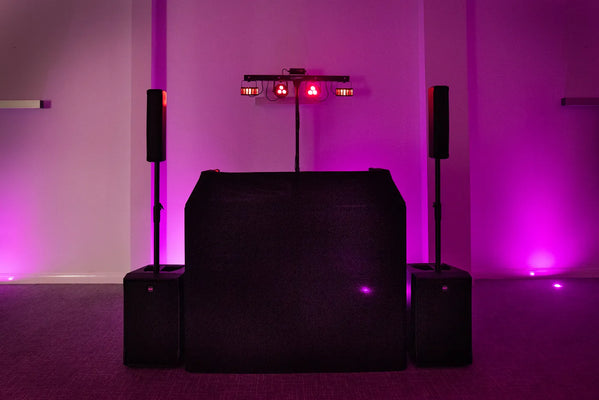Why Vocal Warm-Ups Are Important: A Comprehensive Guide for Singers
As any seasoned singer knows, vocal warm-ups are a crucial part of a healthy, sustainable singing practice. Whether you’re preparing for a concert, an audition, or just rehearsing for fun, taking the time to warm up and warm down your voice can make all the difference in your performance and overall vocal health. In this blog, we’ll explore the importance of vocal warm-ups, why you should always include warm-up and warm-down routines in your practice, and some effective techniques, tools, and resources to help you get started.
The Importance of Vocal Warm-Ups

1. Prevents Vocal Injury
One of the primary reasons for warming up your voice is to prevent strain and injury. Singing involves using the vocal cords (or vocal folds), and like any muscle, they need to be gradually prepared for activity. Starting to sing without warming up can lead to strain, hoarseness, and even long-term damage. Warm-ups help the vocal folds become more flexible and reduce the risk of vocal fatigue.
2. Improves Vocal Performance
Warming up doesn’t just protect your voice—it also enhances your singing performance. A proper warm-up increases blood flow to the muscles of the larynx, which helps you achieve greater vocal control, clarity, and range. By gently exercising your voice, you prime it to produce smoother transitions between registers, higher pitches, and more resonant tones.
3. Promotes Vocal Flexibility
The more flexible your vocal cords are, the more you’ll be able to adapt your voice to different musical styles, dynamics, and emotions. Vocal warm-ups prepare your voice to be more agile, allowing you to handle high notes, rapid passages, and dramatic changes in volume or tone.
4. Increases Breath Support
Breathing is a fundamental aspect of singing. Proper warm-ups focus on strengthening the muscles involved in breathing (such as the diaphragm, intercostal muscles, and abdominal muscles), leading to better breath control. This makes it easier to sustain long phrases, sing with power, and avoid breathy or shaky tones.
5. Sets the Right Mental and Physical State
Warming up your voice is not just about the vocal folds—it’s about preparing your entire body and mind for the task ahead. By engaging in warm-up exercises, you also engage your posture, breathing, and mental focus, setting the stage for a confident, focused performance.
The Importance of Vocal Warm-Downs
Related Products

While much attention is given to warm-ups, vocal cool-downs or warm-downs are equally important. A warm-down helps you transition from your singing or performance back to a resting state. Here are a few reasons why warm-downs should not be neglected:
1. Prevents Vocal Fatigue
Just as warming up prepares the voice for activity, cooling down helps the muscles of the vocal folds relax after exertion. A gentle warm-down helps release any tension built up during singing and reduces the chances of waking up with a hoarse or strained voice.
2. Restores Vocal Balance
Vocal cool-downs help restore the balance in the vocal cords and surrounding muscles. They also allow your voice to return to a neutral state, which can be especially important if you’ve been singing for an extended period of time.
3. Prevents Long-Term Damage
Without proper cool-downs, excessive tension can accumulate in the vocal muscles, leading to chronic strain or overuse injuries over time. A quick, gentle warm-down after a performance or practice session can help ensure that your vocal cords recover fully.
Effective Vocal Warm-Up Techniques
1. Lip Trills and Lip Buzzes
Lip trills (or lip bubbles) are one of the best ways to engage your breath support while gently warming up your vocal cords. By blowing air through your lips and creating a buzzing sound, you release tension and encourage relaxed vocal production. Try singing scales or simple melodies while performing lip trills.
2. Humming
Humming is another great exercise for warming up your voice. It encourages a smooth, resonant sound and warms up the vocal folds without straining them. Start with gentle humming at a low pitch and gradually work your way through your vocal range.
3. Sirens
A siren sound, in which you glide from your lowest to highest pitch (and back down), helps stretch your vocal cords and prepare them for a wide range of pitches. This exercise encourages flexibility and a smooth transition between vocal registers.
4. Vocal Slides (Glissandos)
Vocal slides or glissandos are excellent for warming up the vocal cords and promoting smooth transitions between different notes. Start at a low pitch and gradually slide up to a higher pitch, then back down again, without breaking or straining.
5. Vowel Exercises
Singing vowels on various pitches is a great way to engage different aspects of vocal production. Focus on clear, open vowels such as “ah,” “ee,” “oo,” and “ay” while varying the pitch. These exercises help promote resonance, diction, and breath control.
6. Breathing Exercises
Breathing exercises are an essential part of any vocal warm-up. Practice deep diaphragmatic breathing by inhaling slowly through the nose, expanding your belly, and exhaling gently through your mouth. Try incorporating breath exercises with your vocal warm-ups to build strength and endurance.
When to Warm Up
Timing your warm-up is important for maximising its effectiveness. Here are some guidelines:
Before a Performance or Rehearsal: Warm up your voice about 15-30 minutes before you perform or rehearse. Start with gentle exercises, gradually increasing in intensity. Avoid singing full songs or pushing your voice too early—your warm-up should be about getting the vocal folds moving and prepared for the demands of singing.
After a Break or Long Rest: If you’ve had a break from singing (like after a long day or a vocal rest), always start with a more gradual warm-up to avoid overloading your voice.
On Non-Singing Days: If you’re not planning to sing but want to maintain vocal health, you can do short, gentle warm-up exercises to keep your voice in good condition.
Vocal Warm-Up Tools
In addition to basic vocal exercises, there are several tools you can use to help with warming up:
1. Piano or Tuner App: A tuner or piano app can help you check your pitch and make sure you're staying in tune while warming up. Apps like *Tuning Fork*, *Simply Piano*, or *VocalizeU* can be invaluable for warming up with accuracy.
2. Vocal Dampeners or Mutes: These are devices you place in your mouth to help reduce vocal strain during exercises, especially if you want to practice without pushing too hard. Popular options include the *VocalMist* or *Resonance Mute*.
3. Hydration Tools: Keep your voice hydrated by drinking warm water with a little honey or lemon. Hydration is critical for vocal health, and using a humidifier in dry environments can also help keep your vocal folds lubricated.
Online Resources for Vocal Warm-Ups

Luckily, there are many excellent online resources to help you build a vocal warm-up routine. Some great options include:
1. YouTube Channels:
- The Vocalist Studio (by Robert Lunte) offers many warm-up and technique-building videos.
- Dr Dan's Voice Essentials offers exercises and tips for singers at all levels.
- New York Vocal Coaching provides free vocal warm-up videos and exercises.
2. Apps:
- VocalizeU offers a full library of exercises and vocal training programs designed for all levels of singers.
- Singa provides interactive vocal warm-ups and lessons for beginner to advanced singers.
3. Websites:
- The Modern Vocal Coach (www.themodernvocalcoach.com) offers structured warm-up routines and other vocal tips.
- Vocal Health Education (www.vocalhealth.org) provides resources and advice for singers looking to protect and care for their voices.
Whether you’re an aspiring singer or a seasoned professional, incorporating vocal warm-ups and cool-downs into your daily routine is essential for maintaining vocal health and improving performance. From preventing injury to increasing vocal flexibility, a thoughtful warm-up routine ensures that your voice is in top form when you need it most. Use the techniques, tools, and resources outlined above to create a customised warm-up plan that works for you, and take care of your voice—after all, it’s your most important instrument!
Happy singing! 🎤🎶




















